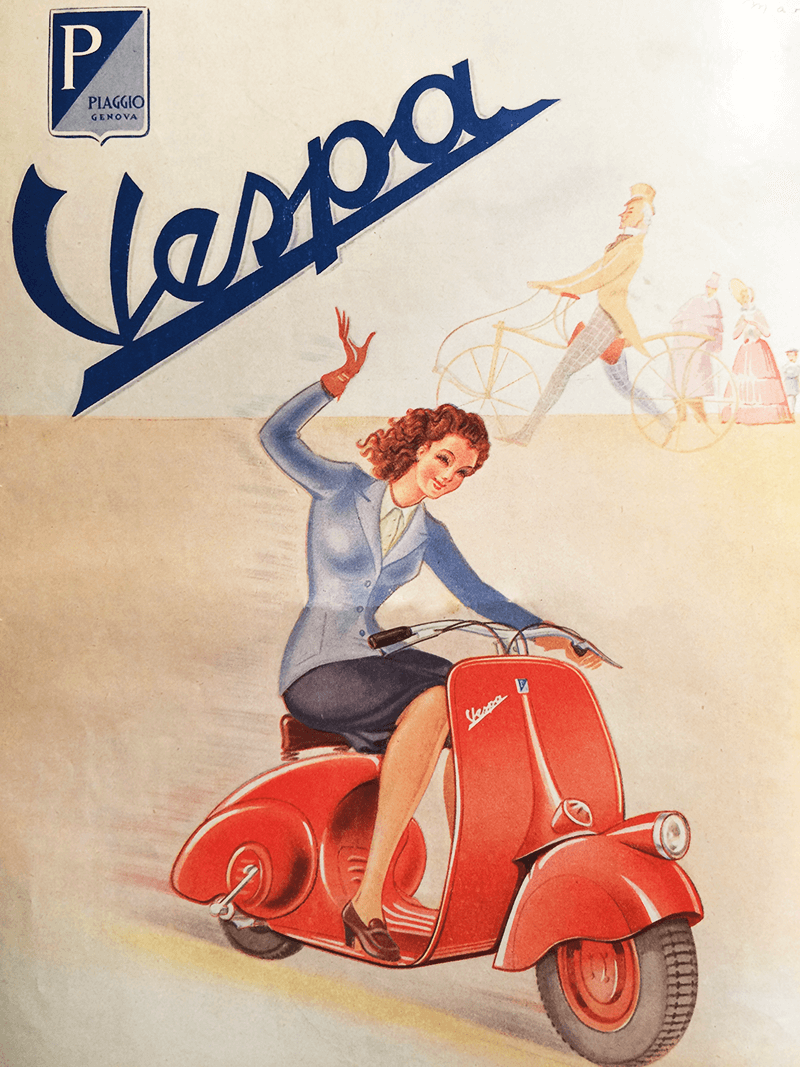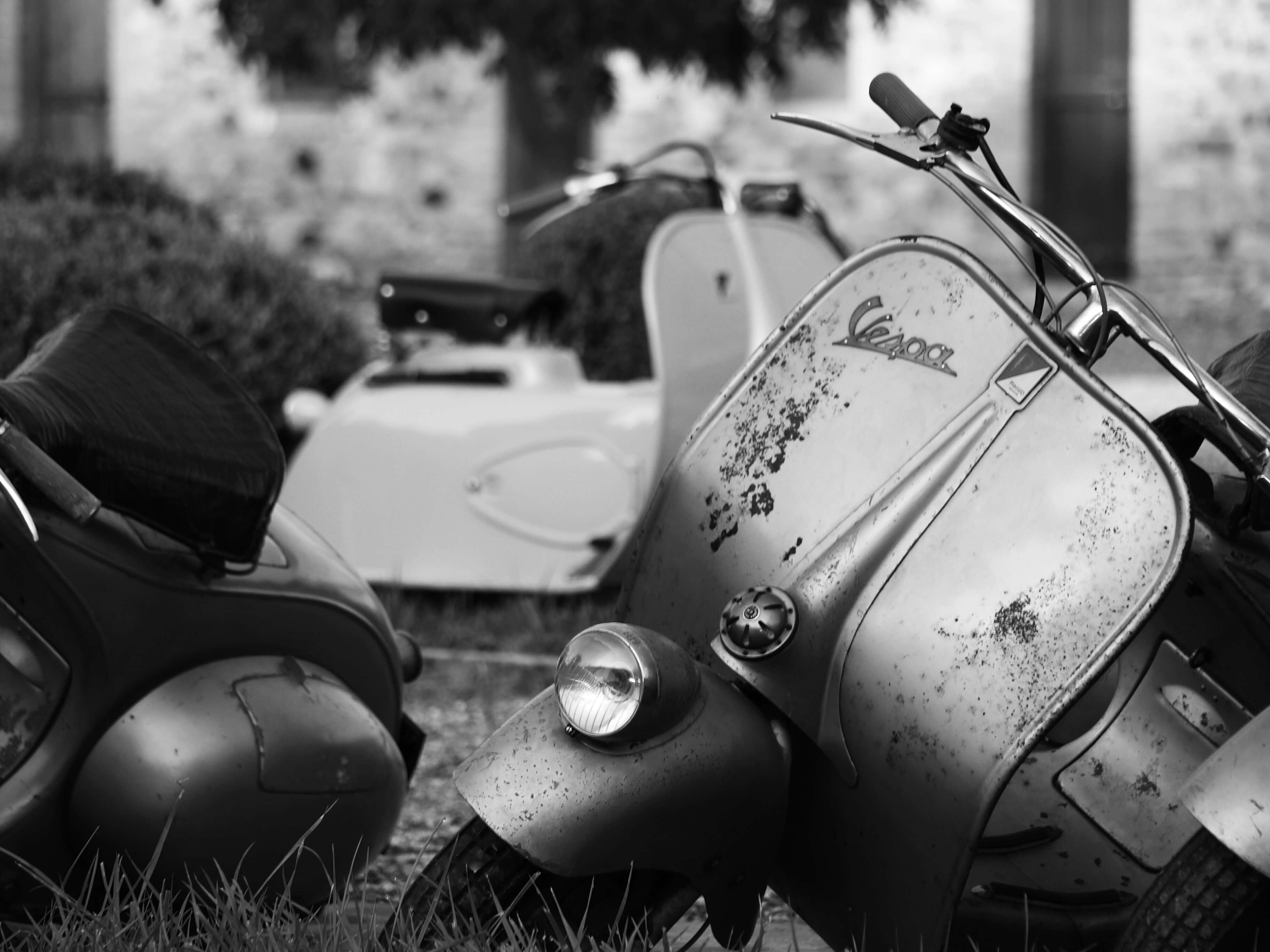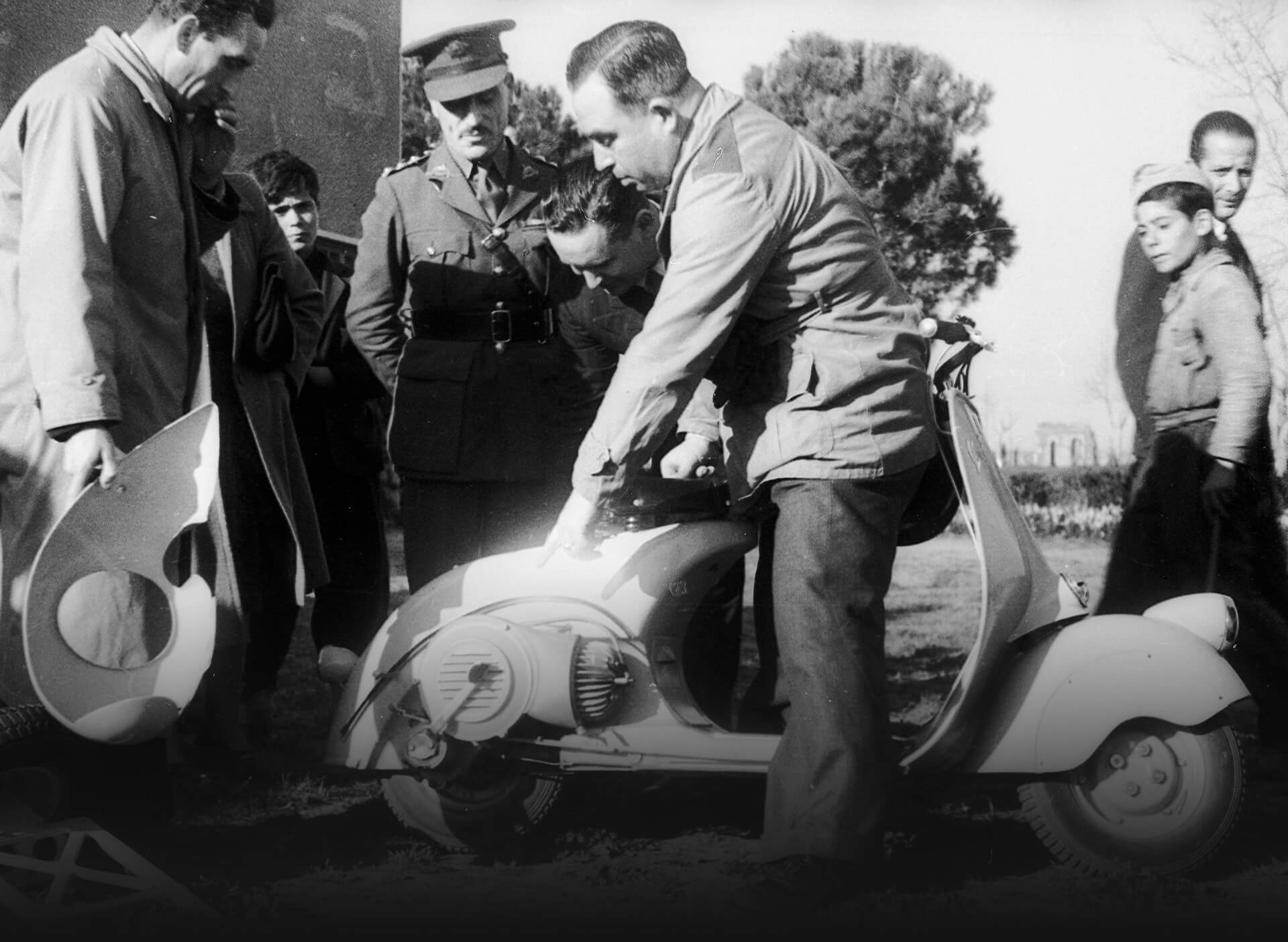HISTORY OF PIAGGIO
PIAGGIO IS A COMPANY BORN IN THE MID-NINETEENTH CENTURY SPECIALIZED IN NAVAL FURNISHMENTS.
TOWARDS THE BEGINNING OF THE TWENTIETH CENTURY IT MOVED TO THE RAILWAY CONSTRUCTIONS, ENCOURAGED BY THE CONSTANT INNOVATIONS FROM THE USA.
In the aeronautics industry, thanks to the high professionalism of its best engineers, the Company achieved remarkable results until the apex in the construction of the P108, the unique Italian four-engined bomber, serving with the Regia Aeronautica.
During the end of the conflict, Piaggio, a strategic military Company, suffered heavy damages both from the Allied raids and from the retreating German army.
ENRICO PIAGGIO, BECAME THE LEADER AND FOUND HIMSELF FORCED TO MOVE, ONCE AGAIN, TOWARDS NEW PROSPECTS. HE WAS INTERESTED IN THE CONCEPT OF A SMALL VEHICLE THAT HAD BEEN SUCCESSFUL IN AMERICA AND SO ENRICO ASSIGNED HIS ENGINEER RENZO SPOLTI THE TASK OF DESIGNING IT.
Between 1944 and 1945 he completed his task by offering Piaggio the new vehicle, a project called MP5 and renamed Paperino.


In the aeronautics industry, thanks to the high professionalism of its best engineers, the Company achieved remarkable results until the apex in the construction of the P108, the unique Italian four-engined bomber, serving with the Regia Aeronautica.
During the end of the conflict, Piaggio, a strategic military Company, suffered heavy damages both from the Allied raids and from the retreating German army.
ENRICO PIAGGIO, BECAME THE LEADER AND FOUND HIMSELF FORCED TO MOVE, ONCE AGAIN, TOWARDS NEW PROSPECTS. HE WAS INTERESTED IN THE CONCEPT OF A SMALL VEHICLE THAT HAD BEEN SUCCESSFUL IN AMERICA AND SO ENRICO ASSIGNED HIS ENGINEER RENZO SPOLTI THE TASK OF DESIGNING IT.
Between 1944 and 1945 he completed his task by offering Piaggio the new vehicle, a project called MP5 and renamed Paperino.






Paperino was already equipped with a supporting structure and a large protective shield. Studies were made to equip it with both automatic and cardan transmission. After tests and a large design analysis, the Company's owner was not fully convinced.
SO PIAGGIO CALLED ENG. CORRADINO D'ASCANIO THAT BROUGHT NEW AND FUNDAMENTAL INNOVATIONS KNOWN AS CANTILEVERED ENGINE WITH DIRECT TRANSMISSION, FRONT SINGLE BEAM GEARSHIFT FORK AND A NEW CONTROL OF THE GEARSHIFT THAT ALLOWED, WITH A SINGLE ROTATING MOVEMENT OF THE HAND, TO CHANGE THE SPEED RATIO.


Paperino was already equipped with a supporting structure and a large protective shield. Studies were made to equip it with both automatic and cardan transmission. After tests and a large design analysis, the Company's owner was not fully convinced.
SO PIAGGIO CALLED ENG. CORRADINO D'ASCANIO THAT BROUGHT NEW AND FUNDAMENTAL INNOVATIONS KNOWN AS CANTILEVERED ENGINE WITH DIRECT TRANSMISSION, FRONT SINGLE BEAM GEARSHIFT FORK AND A NEW CONTROL OF THE GEARSHIFT THAT ALLOWED, WITH A SINGLE ROTATING MOVEMENT OF THE HAND, TO CHANGE THE SPEED RATIO.
AFTER SESSIONS OF TESTS ON THE PROTOTYPE IN BIELLA AND THE CONSTRUCTION AT THE BEGINNING OF 1946 OF SOME EXPERIMENTAL UNITS, FINALLY, THE FIRST SIXTY VESPA CALLED ZERO SERIES WERE ASSEMBLED. THIS NAME WAS CHOSEN BECAUSE MANY WORKFLOWS WERE STILL HAND-MADE AND ALSO TO HIGHLIGHT A PRE-PRODUCTION PHASE STILL NOT PERFECT.


Eventually, the debut and the birth took place on March 24th 1946 at the Torino Mechanical and Metallurgy Exhibition. Enrico Piaggio was pleased to write to his associates later: "I have the pleasure to inform you that the first units have met the general admiration... I express my most eager pleasure, aware that, if we work together, we can mark other important steps for our industrial recovery."
A week later the Vespa was presented in the main Italian towns and at the same time, the first ads appeared on the newspapers.
Its cylindrical capacity was 98 cc but for the foreign markets the engine size was available above 125cc.
In 1946 they managed to produce 2484 Vespa at the price of Lire 65.520 including taxes and freight.


THE REST IS KNOWN: SO FAR, THE NAME VESPA HAS BEEN USED FOR MORE THAN TWENTY MILLION VEHICLES OVER SEVENTY YEARS OF ETHEREAL AND IMMORTAL EXISTENCE.